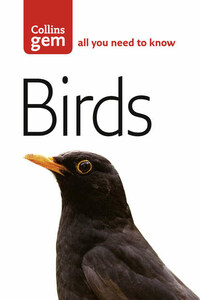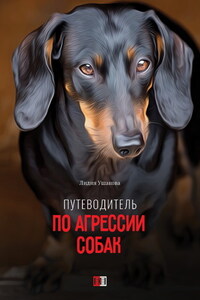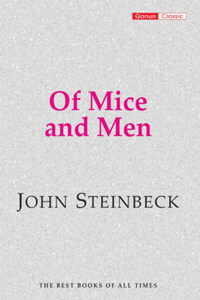The birds in this book fall into 27 broad family groupings, each of which is identified by a typical silhouette at the top of the page. Birds are highly mobile and versatile creatures, and occasionally their anatomical adaptations to a particular way of life may outweigh family similarities. For example, swallows and swifts, so similar in appearance, are unrelated, and cranes (which look like herons) are actually related to the crakes and rails. In such cases, for ease of use the page heading silhouette is that which makes identification easiest for the birdwatcher.
TitlePage
Introduction
Divers (Gaviiformes) and Grebes (Podicipediformes) are specialist diving birds of both fresh and salt waters, hunting fish and other small aquatic animals. Divers are slim and short-necked, grebes plumper: both have feet with lobed toes set back near a stumpy tail. Their wings are small, beat rapidly, and they fly relatively infrequently.
FulmarsandShearwaters (Procellariiformes) are oceanic seabirds with beaks showing clear signs of segmentation and with conspicuous paired tubular nostrils on the ridge. They are masters of energy-efficient gliding, and come ashore only to breed. They feed on fish and plankton caught near the surface.
Gannets and Cormorants (Pelecaniformes) are large fish-eating waterbirds, characterised by powerful beaks. Gannets are maritime, spend most time in the air and dive spectacularly; cormorants spend more time on the water (fresh or salt), dive from the surface, and pursue prey underwater propelled by their large feet with all four toes joined by webbing.
Herons and allies (Ciconiiformes) and Crane (Gruiformes) are notably long-legged, long-necked wetland birds feeding on various small animals. Most are large, some huge. They have long, dagger-like beaks and stab at their prey. Some have adapted to drier habitats.
Swans,Geese and Ducks (Anseriformes) form a uniform family, generally aquatic (fresh and salt waters), some carnivorous, others vegetarian. Many dabble for food, while others dive. All are characterised by âduck-likeâ beaks and by their triangular webbed feet.
Birds of Prey (Accipitriformes and Falconiformes) are often called âraptorsâ, and are characterised by relatively large effective eyes, markedly hooked beaks for tearing flesh (all are carnivorous or scavengers) and by long, usually bare lower legs ending in sharply hooked talons. Females are often substantially larger than males.
Game Birds (Galliformes) and Rails (Gruiformes) are generally omnivorous and characterised by bulky bodies and comparatively small heads. Short rounded wings lift them rapidly into flight. Game birds are terrestrial, with upright stance, running powerfully. Rails are marshland birds, with long legs and large feet. Some swim well, some dive.
Waders (Charadriiformes) are shoreline or marshland birds, feeding on a variety of small invertebrate animals. Most are relatively long-legged, with long toes. Most important identification features to observe (beside plumage colour) are beak length and shape, wing and tail flight patterns and leg colour.
Skuas, Gulls and Terns (Charadriiformes) are long-winged web-footed seabirds. Skuas are oceanic or coastal, piratical or predatory, but can fish for themselves. Gulls are more omnivorous, larger species predatory, ancestrally coastal but now often occur inland. Terns are smaller, slimmer, shorter-legged, with longer slimmer wings, and dive from the air for small fish prey. Gulls often, skuas and terns rarely, rest on the water.
Auks (Charadriiformes) are robustly dumpy, short-necked seabirds with short narrow wings and whirring flight. They feed on fish caught by diving from the surface and pursue their prey underwater, propelled by their wings.
Pigeons (Columbiformes) are heavy-bodied, small-headed vegetarian (largely seed-eating) birds with fast direct flight. There is no distinction between pigeons and doves.
Cuckoo (Cuculiformes) and Nightjar (Caprimulgiformes) are long-tailed birds with short pointed wings. Both are short-legged and have small beaks, feeding on insects, which are caught in flight by nightjars.
Owls (Strigiformes) are character-istically stocky, with short tails and an upright stance. Large heads and big eyes surrounded by a prominent facial disc indicate largely nocturnal life-styles. Small animal prey is captured in powerful sharp talons.
Kingfisher, Bee-eater, Hoopoe (Coraciiformes) form a group with little in common anatomically, but all sufficiently brightly coloured to be readily identified. All are carnivorous, their prey ranging from insects to lizards and fish.
Woodpeckers (Piciformes) form a close-knit group, featuring a strong straight dagger-like beak, long, strong central tail feathers used as a prop when perched on trunks, and powerful feet with toes distinctively arranged two pointing forward, two back. Their flight is undulating, their calls strident, their drumming far-carrying.
Larks, Pipits and Wagtails (Passeriformes: Alaudidae, Motacillidae) are largely terrestrial, swift running birds of open habitats. Larks and pipits are heavily streaked and well camouflaged, with a long hind claw; wagtails are more colourful, with long incessantly wagged tails. All eat insects and small soil invertebrates, larks also eat vegetable matter.








